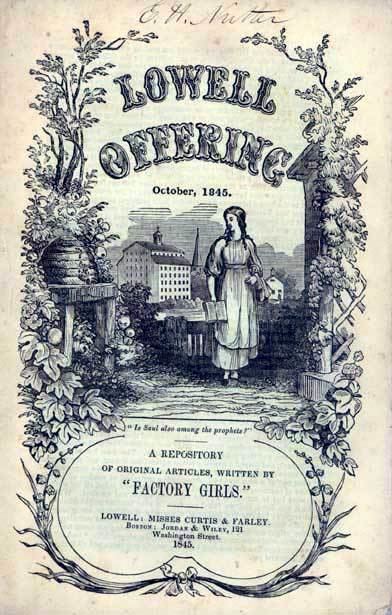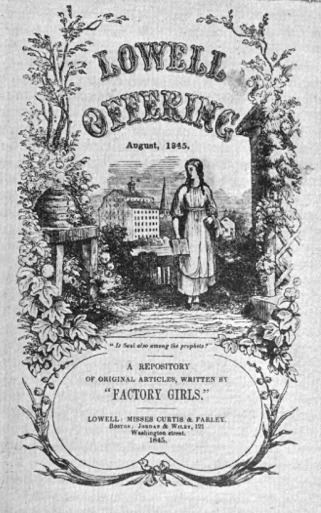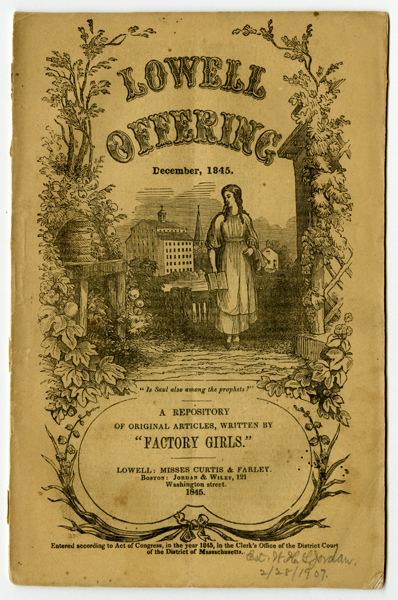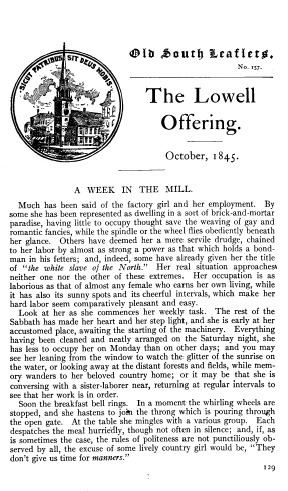Discipline Literary journal Frequency Monthly | Language English | |
 | ||
Publication history 1840-1845, succeeded by New England Offering | ||
The Lowell Offering was a monthly periodical collected contributed works of poetry and fiction by the female textile workers (young women [age 15-35] known as the Lowell Mill Girls) of the Lowell, Massachusetts textile mills of the early American industrial revolution. It began in 1840 and lasted until 1845.
Contents

History

The Offering was initially organized in 1840 by the Reverend Abel Charles Thomas (1807-1880) pastor of the Second Universalist Church. From October 1840 to March 1841, it consisted of articles from many of the local improvement circles or literary societies. Later, it became broader in scope and received more spontaneous contributions from Lowell's female textile workers. The Offering had hundreds of subcribers and supporters from throughout New England, United States, and among foreign visitors.
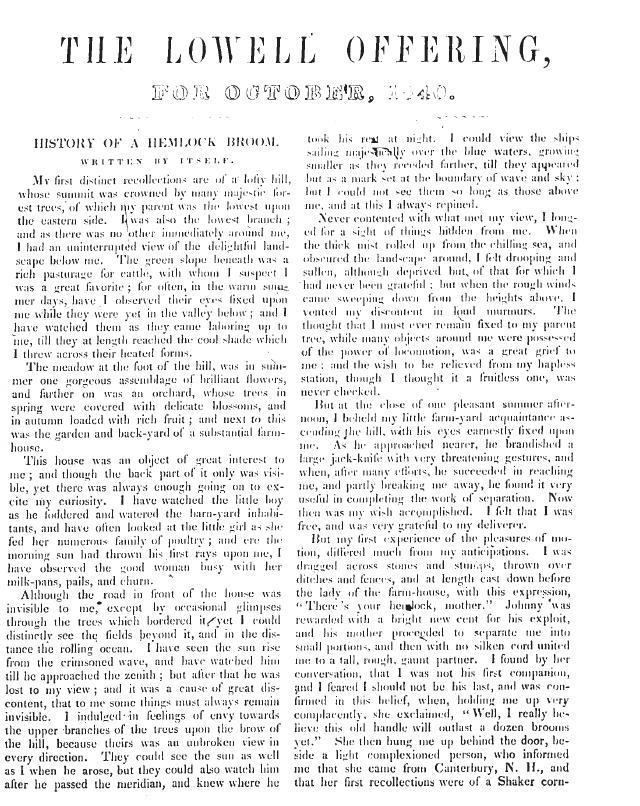
As its popularity grew, workers contributed poems, ballads, essays and fiction – often using their characters to report on conditions and situations in their lives. The contents of the magazine alternated between serious and farcical. In the first issue, "A Letter about Old Maids" suggested that "sisters, spinsters, lay-nuns, &c" were an essential component of God's "wise design". Later issues – particularly in the wake of labor unrest in the factories – included an article about the value of organizing and an essay about suicide among the Lowell girls. Among its contributors: Eliza G. Cate, Betsey Guppy Chamberlain, Abba A. Goddard, Lucy Larcom, Harriet Hanson Robinson.
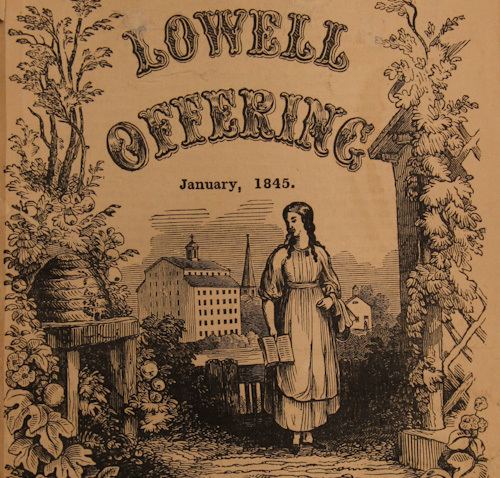
Harriet Farley, against her family and friends wishes, left Atkinson, NH in 1838 to work in Lowell's textile mills. In Lowell, although working 11 to 13 hours a day, and living in a crowded company boardinghouse, she felt a sense of freedom to “read, think and write…without restraint.” She was soon contributing articles to the newly formed Lowell Offering, and in 1842 along with Harriot Curtis became its co-editor. The magazine was revived in 1848 as the New England Offering (1848-1850), gathering contribution from working women throughout New England.
Other uses
The University of Massachusetts Lowell currently uses the title for its student literary magazine as an homage.
